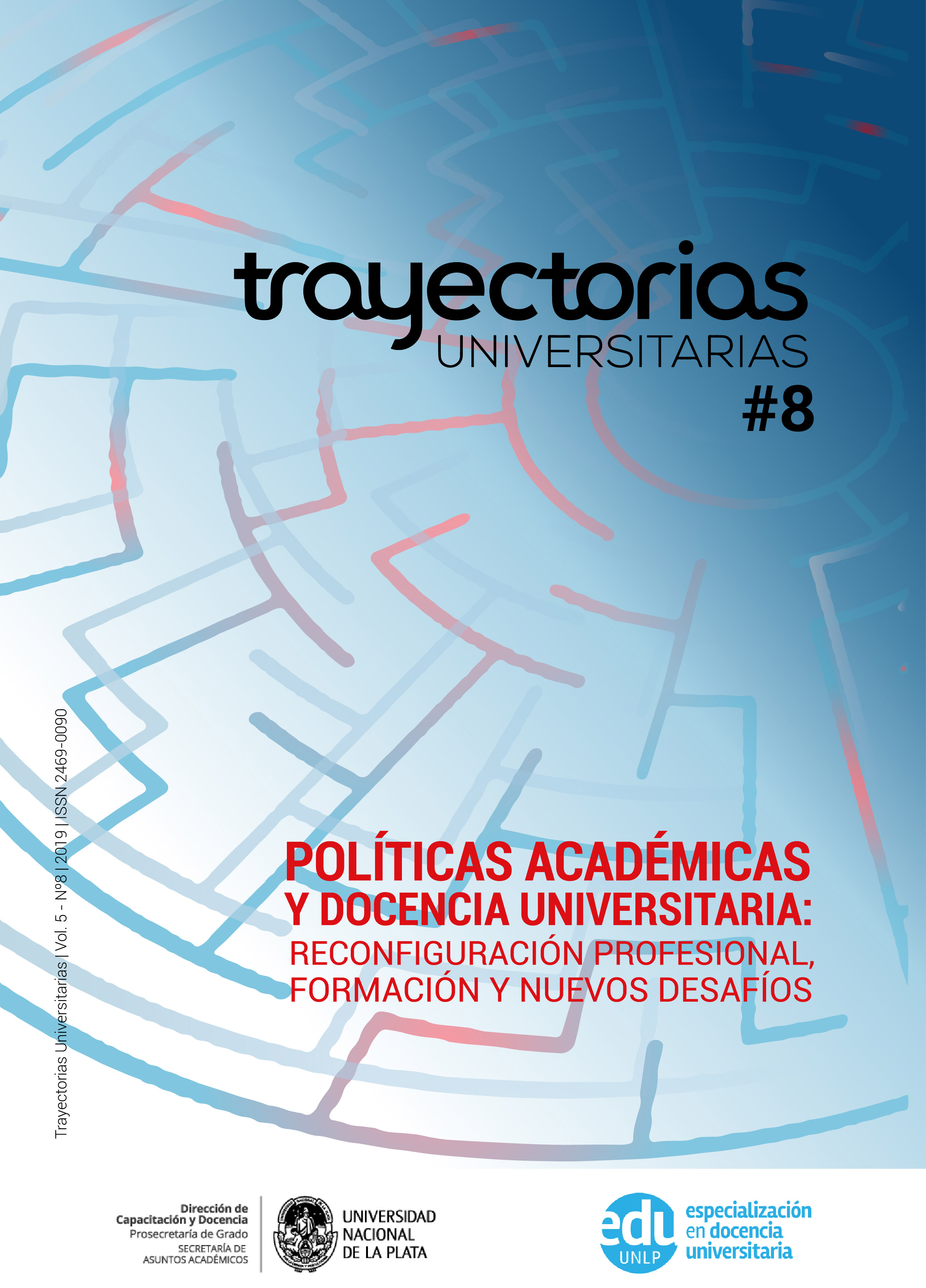Analogy between two teaching strategies in the last two years
DOI:
https://doi.org/10.24215/24690090e009Keywords:
Teams, Corrillos, GroupsAbstract
The objective of this article is to compare academic performance using the dynamics of work in groups and exhibition class during the years 2017 and 2018. The teacher asked questions on a topic, to different groups. Then teams were formed, made up of members of different groups. Each student explained the topic. An evaluation was taken: in groups, in 2017 where 45% did not answer any correctly, 33% answered 1, 20% answered 2, 2% 3 questions and nobody 4 questions. In 2018, in groups 30% did not answer any questions; 1 answered 23%, 2 answered 28%, 3 16% and nobody answered the questions. In another classroom, the 4 questions were presented with expository methodology and were answered by 3% of the students. With an exhibition class in 2017, 39% did not answer any questions correctly, 66% 1, 13% 2, 3% 3 questions and none answered the 4 questions. In 2018, 27% did not answer any, 31% answered 1, 25% answered 2, 12% answered 3 and 4% correctly answered the 4 questions. There is a significant difference with corrillos between both years.
Downloads
Metrics
References
Barreiro, T. (1992). “Trabajos en grupo Buenos Aires”. Kapeluz.
Beal, G.; Bohlen, J. y Neil Raudabaugh, J. (1964). “Conducción y acción dinámica del grupo-Biblioteca de Psicología contemporánea”. Buenos Aires. Kapeluz.
Cirigliano, G. F.; Villaverde, A. (1986). "Dinámica de grupos y educación Buenos Aires". Humanitas.
Lopez Noguero, F. (2007). "Metodología participativa en la Enseñanza Universitaria". Madrid: Narcea.
Perrone, G. y Propper, F. (2007). "Diccionario de Educación".Buenos Aires: Alfagrama.
Urbano, C. y YunI, J. (2015) El trabajo grupal en las instituciones educativas Córdoba Brujas.
Downloads
Published
How to Cite
Issue
Section
License
La aceptación de un original por parte de la revista implica la cesión no exclusiva de los derechos patrimoniales de los/as autores/as en favor del editor, quien permite la reutilización, luego de su edición (postprint), bajo una Licencia Creative Commons Atribución-NoComercial-CompartirIgual 4.0 Internacional (CC BY-NC-SA 4.0).
Acorde a estos términos, el material se puede compartir (copiar y redistribuir en cualquier medio o formato) y adaptar (remezclar, transformar y crear a partir del material otra obra), siempre que a) se cite la autoría y la fuente original de su publicación (revista y URL de la obra), b) no se use para fines comerciales y c) se mantengan los mismos términos de la licencia.
La cesión de derechos no exclusivos implica que luego de su edición (postprint) en Trayectorias Universitarias los/as autores/as pueden publicar su trabajo en cualquier idioma, medio y formato; en tales casos, se solicita que se consigne que el material fue publicado originalmente en esta revista.
Tal cesión supone, también, la autorización de los/as autores/as para que el trabajo sea cosechado por SEDICI, el repositorio institucional de la Universidad Nacional de La Plata, y sea difundido en las bases de datos que el equipo editorial considere adecuadas para incrementar la visibilidad de la publicación y de sus autores/as.
Asimismo, la revista incentiva a los/as autores/as para que luego de su publicación en Trayectorias Universitarias depositen sus producciones en otros repositorios institucionales y temáticos, bajo el principio de que ofrecer a la sociedad la producción científica y académica sin restricciones contribuye a un mayor intercambio del conocimiento global.















